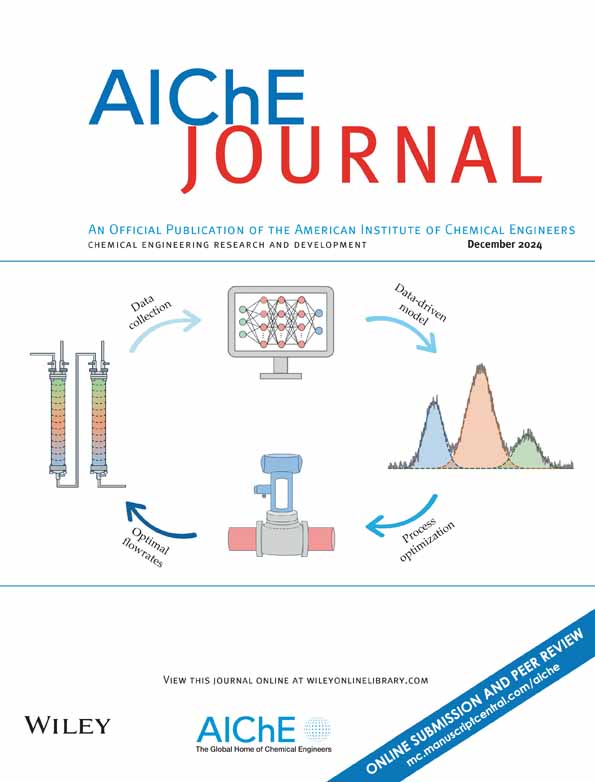Remarkable reduction of microbubble size by constructing a flexible interaction region in a T-junction microchannel
IF 3.5
3区 工程技术
Q2 ENGINEERING, CHEMICAL
引用次数: 0
Abstract
High-efficiency reduction of the microbubble size is important for bubble-based microflow processes but has hitherto required high-energy-consumption methods. This study designed a new T-junction microchannel with a flexible interaction region exhibiting apparent superiority in producing smaller bubbles with high energy-utilization efficiency, and for the first time breaks the limitation of the flow pattern in the ordinary T-junction microchannel. The results indicate that under the given two-phase working conditions, the microbubble size was greatly reduced in the new T-junction microchannel compared to that in the ordinary one. The microbubble formation mechanism in the new microdevice is analyzed via a simulated liquid velocity field. Importantly, the bubbly flow pattern appeared rapidly under a higher gas flow rate, which is totally opposite to the expectations in the ordinary T-junction. Finally, via interface analysis, the importance of the gas velocity on the viscous shearing force was clarified, and a new bubble size-prediction model was developed.通过在t型结微通道中构建柔性相互作用区域,显著减小了微泡尺寸
高效减小微泡尺寸对于基于气泡的微流工艺非常重要,但迄今为止需要高能耗的方法。本研究设计了一种具有柔性相互作用区域的新型t结微通道,在产生小气泡和高能量利用效率方面具有明显的优势,首次突破了普通t结微通道流型的限制。结果表明,在给定的两相工作条件下,新型t结微通道的微泡尺寸比普通t结微通道的微泡尺寸大大减小。通过模拟液体速度场分析了微泡形成机理。重要的是,在较高的气体流速下,气泡流动模式迅速出现,这与普通t型结的预期完全相反。最后,通过界面分析,阐明了气速对粘性剪切力的影响,建立了新的气泡尺寸预测模型。
本文章由计算机程序翻译,如有差异,请以英文原文为准。
求助全文
约1分钟内获得全文
求助全文
来源期刊

AIChE Journal
工程技术-工程:化工
CiteScore
7.10
自引率
10.80%
发文量
411
审稿时长
3.6 months
期刊介绍:
The AIChE Journal is the premier research monthly in chemical engineering and related fields. This peer-reviewed and broad-based journal reports on the most important and latest technological advances in core areas of chemical engineering as well as in other relevant engineering disciplines. To keep abreast with the progressive outlook of the profession, the Journal has been expanding the scope of its editorial contents to include such fast developing areas as biotechnology, electrochemical engineering, and environmental engineering.
The AIChE Journal is indeed the global communications vehicle for the world-renowned researchers to exchange top-notch research findings with one another. Subscribing to the AIChE Journal is like having immediate access to nine topical journals in the field.
Articles are categorized according to the following topical areas:
Biomolecular Engineering, Bioengineering, Biochemicals, Biofuels, and Food
Inorganic Materials: Synthesis and Processing
Particle Technology and Fluidization
Process Systems Engineering
Reaction Engineering, Kinetics and Catalysis
Separations: Materials, Devices and Processes
Soft Materials: Synthesis, Processing and Products
Thermodynamics and Molecular-Scale Phenomena
Transport Phenomena and Fluid Mechanics.
 求助内容:
求助内容: 应助结果提醒方式:
应助结果提醒方式:


